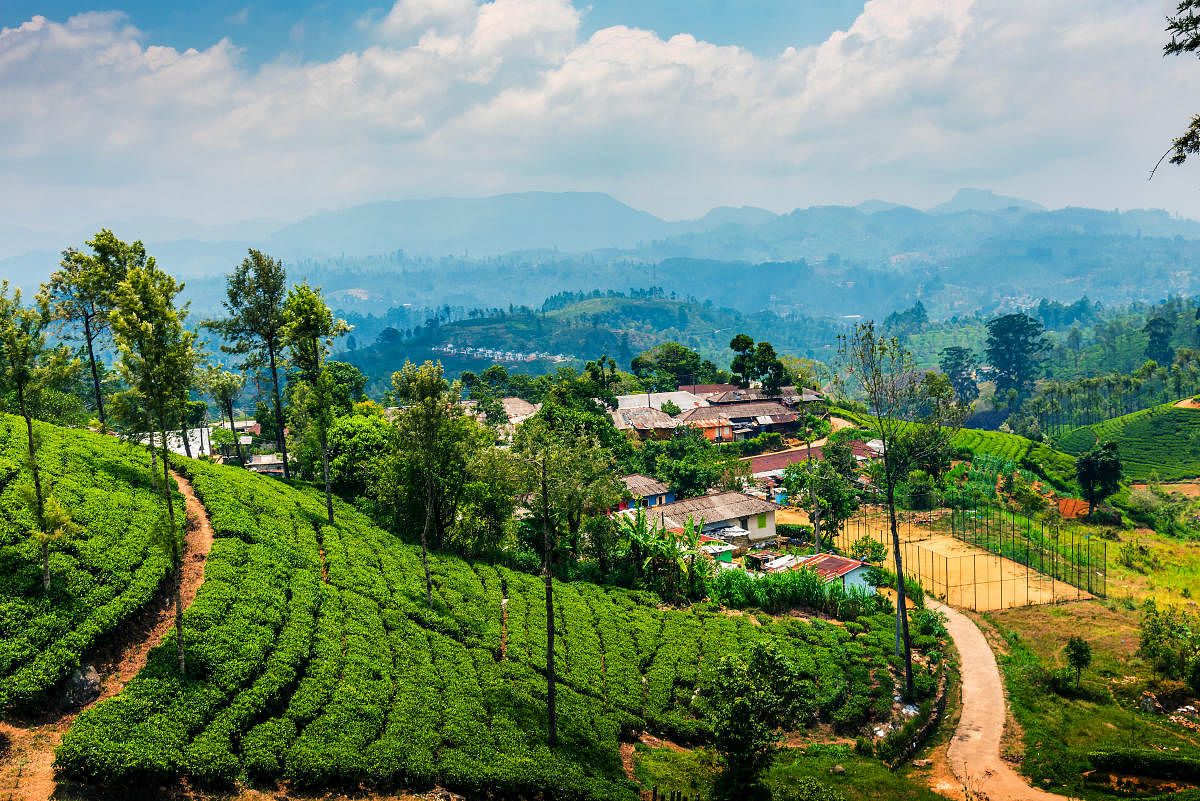
Two names that spelt magic not so long ago with the people of India were linked to Sri Lanka. One was Radio Ceylon (the present Sri Lanka Broadcasting Corporation), the favourite radio station of people across the Indian subcontinent once upon a time and the other was Ceylon tea, the cuppa that brought joy to millions.
A visit to a tea plantation and tea factory was the highlight of my trip to the lush green island nation. The scenic stretch from Kandy to Nuwara Eliya, is any nature lover’s delight. After covering more than halfway through this stretch, in Katukithula hamlet we spotted a tea factory. A visit to the factory gave us an opportunity to watch Ceylon tea being processed live. This is a brand that has brought the country of its origin global recognition and valuable foreign exchange. Before we entered the tea factory, we drove through a lush vista of tea plantations, and at some points among the bushes got down to click some pictures. Nature is in its abundance here as tea hedges are spread far and wide. Chatting with the early pluckers and caressing the tender tea leaves was an experience in itself.
The sight of women plucking the tender terminal shoots and throwing them into the big baskets slung across their shoulders is a feast for the eyes. An experienced tea plucker can pick around 25 kilograms of fresh leaves a day. In low-lying areas pluckers sometimes use a shear or scissors to cut the leaves. Before we gained entrance into the factory to watch for ourselves the process,
we were briefed about Ceylon tea.
The origins
The name of James Taylor is written in golden letters in Sri Lanka’s tea history. It was James Taylor, a Scotsman, who planted the first tea saplings in his estate at Loolecond era in the central highlands of Sri Lanka in 1867. Rest is history.
It was during the period between 1824 and 1839 that the first tea plants were brought to Sri Lanka from China and India. The Royal Botanical Gardens in Peradeniya, Kandy, was the place selected for planting tea saplings on an experimental basis. It was the period in which the once-booming coffee plantations were beginning to wane as a result of a blight that had spread through the estates.
James Taylor had to clear 19 acres of forest to make way for the initial tea plantation on the island. Taylor set up a makeshift processing area for the harvested tea on the verandah of his log cabin. Five years after Taylor planted the tea saplings, in 1872 he established the first fully-equipped tea factory in Sri Lanka. This was also on the Loolecondera Estate. By 1875, the first shipment of Ceylon tea was sent to a London tea auction. Today, after more than 150 years, Sri Lanka is one of the world’s leading tea producers along with China, India, Kenya and Indonesia. These five countries account for 82% of the world tea production and 80% of global exports.
Brewed well
After being briefed about the history of tea in Sri Lanka, we were ushered into the processing units. The staff informed us that Sri Lankan tea is cultivated at a variety of elevations, with 60 percent of the total production being Low-grown tea; High-grown tea is cultivated at altitudes above 1,200 metres, and is generally regarded as being of superior quality with a unique taste and aroma. High-grown tea accounts for 24 percent of the total produce; Mid-country tea accounts for the remaining 16 percent.
Our first stop during the factory visit was at the withering point where the tea leaves brought from the plantations are emptied on the special racks where controlled air current is circulated through and around. By now we could feel the whiff of the tea. Our next stop was the rolling section where the leaves are rolled to extract the juices from the leaves which give the tea its characteristic flavour. We were then shown the fermentation process. During the fermentation stage, the chemical act of oxidation takes place and the leaves change their colour from fresh green to a brown coppery hue. As we moved on, we came across drying machines with large iron chambers fitted with trays. Hot air is forced into the chamber which stops the fermentation/oxidation process.
The final stage is the sorting and bulk pack process. This involves sorting leaves into a number of different grades. The bulk of the tea produced in Sri Lanka is of a particular type called Orthodox tea (the other being CTC tea — Crush, Tear and Curl). Nuwara Eliya, Uva, Dimbula, Uda Pussellawa, Kandy, Ruhuna and Sabaragamuwa are the island’s prime tea-growing regions. Ceylon tea is exported across the world, with Russia being its largest market. Its lovers include people in countries like Iran, the UAE, Syria, Jordan, Turkey Japan and Iraq.
Tea Museum
Those interested can visit the Tea Museum in Hantane, 4-km south of Kandy. Here, one can get an insight into the early years of tea plantations in Sri Lanka. There are splendid exhibits on pioneering tea planters such as James Taylor and Thomas Lipton and it also houses a lot of vintage tea-processing paraphernalia. We also took part in a tea tasting session and bought some fresh tea before we set out to Nuwara Eliya, an idyllic town in upcountry Sri Lanka, sheathed in raw greenery. On the way from the factory to Nuwara Eliya, we stopped at the magnificent waterfalls in the village of Ramboda. There were many tea factories along the route. And like Ceylon tea, the trip ended on a nostalgic note!